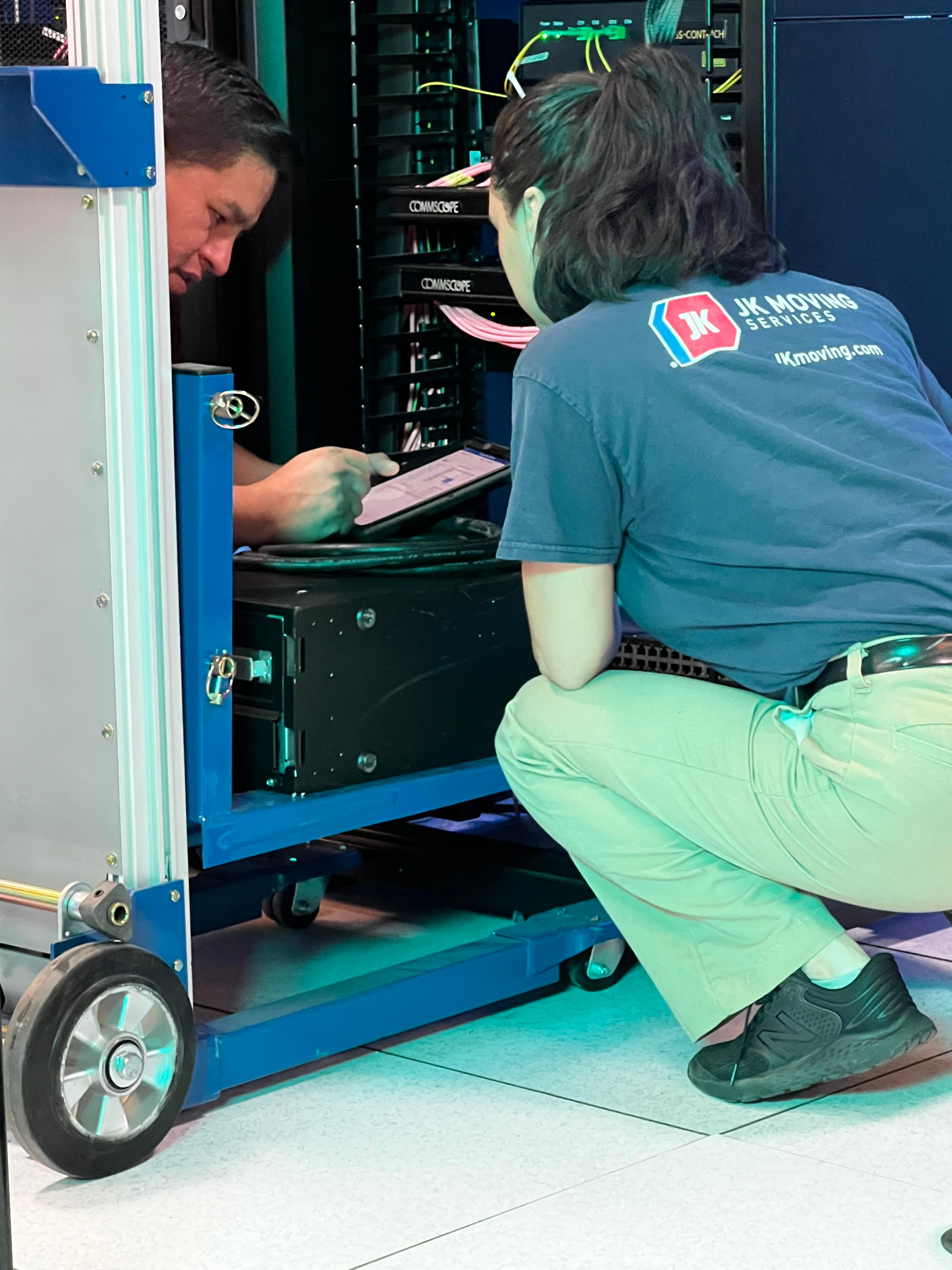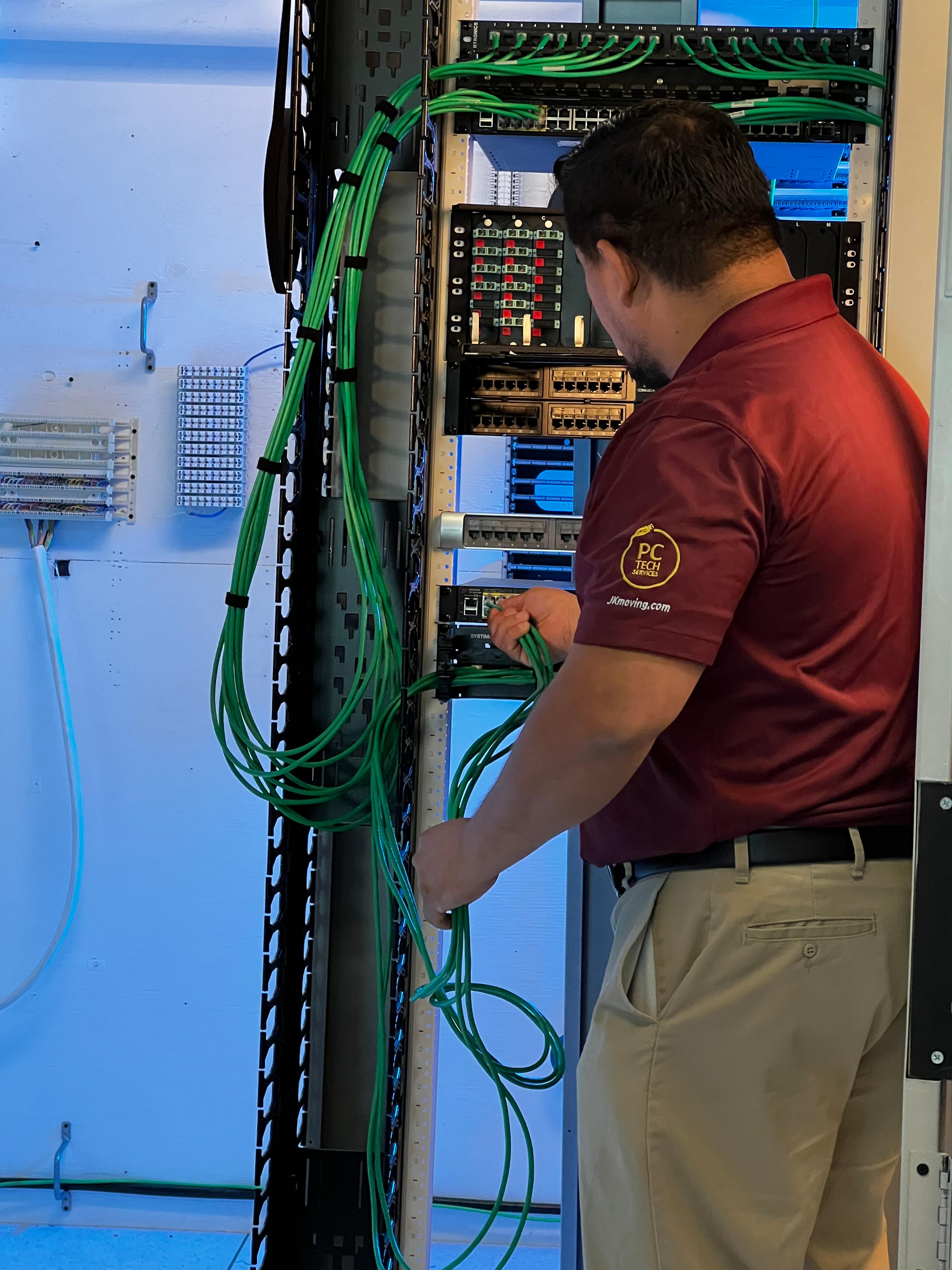
Thinking About Data Center Relocation? JK Technology Services Ensures “Status Green” Business Continuity
Every experienced IT professional knows that a data center migration is a complex undertaking, one that involves relocating hardware and software, and choosing a data center provider that’s right for your business.
Then, there’s the challenge of making sure business operations never stop…operating.
I recently met with Tucker Gladhill, Vice President, Technology Services at JK Moving Services, to learn about how his team ensures that a data center relocation project goes smoothly. We’ve packaged up that conversation and bring it to you here, starting with industry trends.
What’s driving relocation today?

A vast majority of companies with on-premises environments are taking a serious look at their technology infrastructure. Small to medium sized businesses that want to adopt new technologies, leverage production applications, or attract and retain remote workforces are struggling to scale and maintain IT compliance standards on legacy infrastructure. We also see that many organizations are rethinking their real estate footprint to identify cost savings opportunities. That frees up capital that can be invested in their IT infrastructure.
Larger enterprises, that might be further along on their cloud adoption journey, are taking a “cloud smart” approach these days. They’re shifting IT infrastructure off-prem to be ready for the future. Of course, artificial intelligence is driving that to an extent, but as their cloud strategy has evolved, they’ve realized that colo can give them cost savings and deliver low-latency interconnection at the edge as well as to cloud providers.
A full or hybrid cloud migration can be a daunting project in itself, let alone trying to plan and execute a solution with a core team that also has day-to-day responsibilities to manage. There are many risk points, like data corruption, or the security around applications and networks, and countless tasks that need to be considered in preparation of a migration. I was looking at a proposal recently. The long list of tasks mapped to the schedule included everything from the initial site visit and deep-dive review of the migration plan to “ensure each device is tracked and bin number is documented” and finally, “remove floor protection.” We don’t take anything for granted.
That’s where JK Technology Services enters the conversation. Our goal is to make sure the indicator lights on all the equipment leveraged in the IT infrastructure are “status green,” even during the migration.
What’s the #1 concern for your clients when they are exploring a move?
The number one concern is downtime. Many companies have a six-to-seven figure per minute cost of downtime. The JK Technology Services platform is built to limit the cost of downtime by developing a project approach to mitigating risk and maintaining business continuity.
Partnering with CoreSite allows the JK Technology Services (JKTS) team to approach clients with the confidence of knowing we have a colocation provider as a partner that can deliver an infrastructure complementing the risk-adverse, innovative approach JKTS takes with every project. CoreSite gives JKTS the ability to deliver a true end-to-end change management solution from design to delivery…all while focusing on continuity.
You mentioned change management. Tell me more about that.
Change management dovetails into overall business continuity, and of course we’re again talking about avoiding downtime. Not missing a beat in business operations while moving a data center calls for flawless change management.
Change management in the IT space is one of our strongest attributes. We can assimilate with an organization quickly, bring in subject matter expertise, and align as an extension of the organization we’re supporting. We provide a solution that mitigates downtime while delivering an IT environment that accounts for scale and compliance with industry standards.
As soon as an organization begins to rethink what their IT environment will look like next year, and in the next five-to-ten years, they should consider immediately bringing us in. We’d start with a discovery phase as a way to begin designing the path to their desired future state and test the vulnerabilities of a plan already in place.
Let’s be honest, all kinds of things can occur during the planning and design phases of a migration. A senior engineer or project manager leaves the company, the organization undergoes an acquisition or there’s a catastrophic event requiring “all hands on deck.” We run into real-world scenarios like that all the time. It’s always good practice to align early and to start contingency planning, keeping in mind business continuity and how the IT infrastructure plan fits in.
Why shouldn’t or don’t enterprise IT teams take on the task of moving their data center equipment by themselves?

It’s entirely possible for IT teams to move their data center or provide Day 2 support for their own environment residing in a colocation data center environment. For JKTS, it really comes down to business continuity. We always recommend that organizations take a deep look into the impact of pulling IT team members away from core responsibilities to focus on a project like a data center migration or IT lifecycle refresh.
We have worked with brilliant minds in their respective IT fields. That said, sometimes smaller details, like SLA impact on leased equipment or OEM requirements that may need a certified engineer from the manufacturer to maintain warranty, have caused significant project bottlenecks. They were not taken into consideration during the planning phases. Also, there might be infrastructure-related elements that could require an organization to seek outside help, for example proper power load volumes to the rack, to ensure each appliance functions at the highest level. Scaling is another piece of the plan that can be challenging.
It’s tough for clients to anticipate all the logistics, especially if they’ve not done it before. What do you do if a piece of equipment fails before migration? Have you run configurations all the way through the back end to identify if climate mitigation is required for physically relocating appliances, and to meet OEM requirements? What about chain of custody for assets? That’s a type of security that can be neglected when thinking about infrastructure security.
Can there be zero downtime?
Yes! But the only way to have zero downtime is if the organization has full redundancy across their production platforms, including disaster recovery. In this example, it gives the organization the ability to replicate their environment in order to maintain business continuity, schedule the outage in the environment that requires the work, and leverage the redundant environment. As part of making this happen, we always recommend a deep dive into the disaster recovery site(s) to ensure each environment operates as planned prior to scheduling the outage. Running simulations in a test environment before any major migration activity occurs is always recommended.
What’s the most important part of the project?
We’ve been talking a lot about planning and change management. The earlier we start planning with our clients, the better. And by understanding what’s important to them, learning about their business, we can develop a tailored change management strategy that meets all their aspirations.
Communication is an aspect of the relationship that I can’t overemphasize. Transparency is the heart of that. At the very start of our talk, I mentioned that we leverage a services platform to develop the migration plan. It’s built on real-time communications, transparency and other best practices we’ve implemented in hundreds of projects.
So, to answer your question, although it’s hard for me to point to one thing as most important, I believe that for our customers communication is top priority. They are trusting us with the assets their business depends on – knowing what’s happening is key to their peace of mind and a successful relocation.
How does your team interface with a data center provider’s operations team?

JK Technology Services would not be able to offer a true end-to-end solution without data center providers and being able to work in tandem with their operations teams. We often work with the data center on the colocation deployment architecture, to ensure design concepts can be brought to practical application in the field, prior to scheduling any activity with the end user.
The reason we are talking is because CoreSite and JKTS operate really well together. As I mentioned before, communication is not only critical, it's mission critical. The two organizations initially developed our relationship by ensuring we aligned on taking care of the customer first. Then, we looked at how we communicate with customers and other stakeholders. The CoreSite/JKTS approach gives them one hand to shake.
Ready to start planning your data center relocation? Don’t hesitate to reach out. You can start a conversation with Tucker at tucker.gladhill@jkmoving.com.










